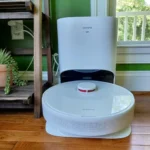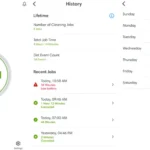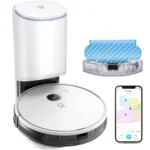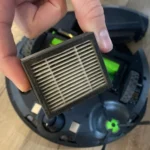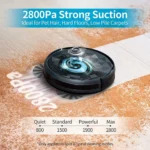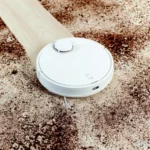As smart vacuum cleaners gain popularity among households, it’s important to know the proper way of emptying their dustbins to ensure their longevity and optimal performance. However, the task may seem straightforward, but there are certain do’s and don’ts that need to be followed to prevent accidents or damage to the device. In this article, we’ll discuss the essential steps to empty a smart vacuum cleaner’s dustbin in a safe and effective manner. So, grab your cleaning gloves and let’s dive in.
Do: Unplug the vacuum cleaner
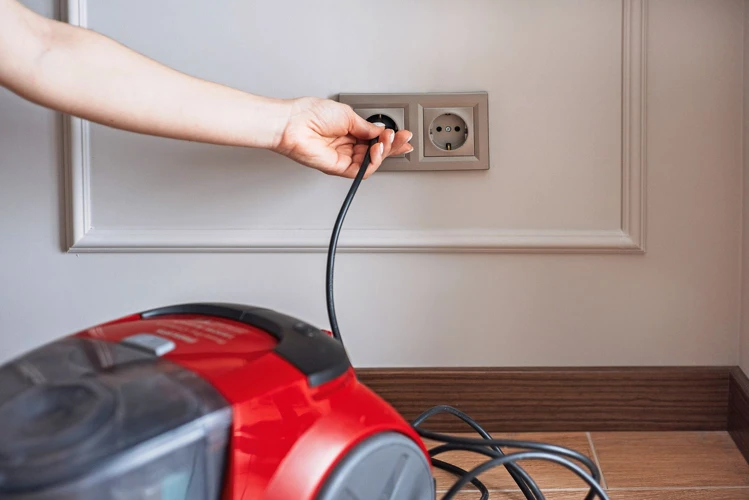
Before emptying the dustbin of your smart vacuum cleaner, it is important to take the necessary precautions to ensure your safety and the longevity of the device. One of the most important “Do’s” is to unplug the vacuum cleaner before proceeding with the emptying process. This simple step may seem obvious, but it is often overlooked and can lead to dangerous consequences. Let’s take a closer look at why this step is essential and how to correctly unplug your device before proceeding. For more tips and tricks on cleaning and maintaining your smart vacuum cleaner’s dustbin, check out our smart vacuum dustbin guide.
Turn off the device and unplug it from the power source.
When it’s time to empty the dustbin of your smart vacuum cleaner, it’s important to take the necessary safety precautions. The first step is to turn off the device and unplug it from the power source. This ensures that there is no electrical current running through the device that could cause injury if you accidentally come into contact with internal components during the dustbin cleaning process.
Here are a few other reasons why you should unplug your smart vacuum cleaner before emptying the dustbin:
- Prevent electrocution – If the device is still plugged into the power source, emptying the dustbin could cause an electrical short circuit leading to electrocution.
- Avoid injury – Turning off and unplugging the device before emptying the dustbin will prevent it from accidentally turning on and causing any injuries to you or your family members.
- Protect the device – Unplugging the device ensures that none of its internal components get damaged during the cleaning process, extending the life of the vacuum cleaner.
Remember, safety is paramount when working with any electrical appliance. Following this basic safety guideline is essential when emptying the dustbin of your smart vacuum cleaner. For more information on how to properly empty the dustbin of your smart vacuum cleaner, check out our article on emptying a smart vacuum cleaner’s dustbin.
Keeping the vacuum cleaner plugged in while emptying the dustbin can cause electrocution, injury, or damage to the device.
It is important to unplug the vacuum cleaner before emptying the dustbin to avoid the risk of electrocution, injury, or damage to the device. Leaving a smart vacuum cleaner plugged in while emptying the dustbin can be hazardous due to the electrical components and moving parts of the device.
In the event of a malfunction or accidental activation, the vacuum cleaner can turn on unexpectedly and injury the user. To avoid this, unplug the smart vacuum cleaner from the power source and turn it off before attempting to empty the dustbin.
Keeping the device plugged in can result in damage to the device’s internal components. When particles of dust, debris, or moisture come in contact with electrical components, this can cause short-circuits, power surges, or damage to the motor.
To avoid expensive repairs or the need to replace the device altogether, always be cautious and take necessary precautions when handling the smart vacuum cleaner’s dustbin. Regularly checking the dustbin’s capacity and cleansing it properly can also contribute to increasing the longevity and efficiency of the smart vacuum cleaner.
Do: Use a bag or container
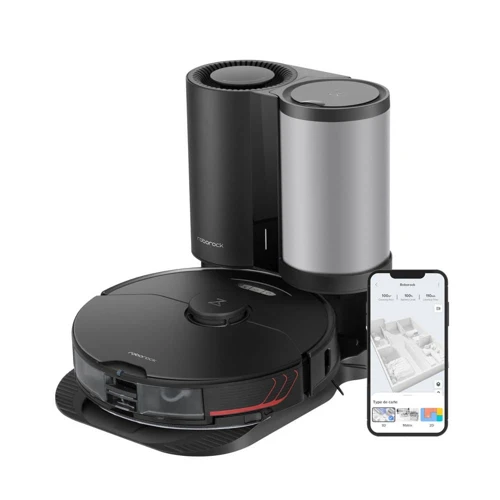
As we discussed earlier, emptying the dustbin of your smart vacuum cleaner is an essential maintenance task that should not be overlooked. One of the top do’s when it comes to emptying a smart vacuum cleaner’s dustbin is to use a bag or container to transfer the dust and debris. This step is crucial and helps prevent the spread of dirt and allergens back into the air. Let’s dive into some more details on how using a bag or container can make a big difference in keeping your smart vacuum cleaner running smoothly.
For more tips on smart vacuum cleaner dustbin cleaning, check out our smart vacuum cleaner dustbin cleaning hacks article.
Prepare a disposable bag or container to transfer the dust and debris from the dustbin.
When it comes to emptying a smart vacuum cleaner’s dustbin, it is important to prepare a disposable bag or container in advance. This will make the process of emptying the dustbin much easier and cleaner.
Why should you use a bag or container to transfer dust and debris?
Using a bag or container allows you to transfer the dust and debris from the dustbin without letting it scatter back into the air. This is especially important if you or someone in your household suffers from allergies or respiratory problems.
What kind of bag or container should you use?
You can use any disposable bag or container that is big enough to hold the dust and debris from the dustbin. A trash bag or a paper bag would both work well. Just make sure that the bag is not too flimsy or lightweight.
How do you transfer the dust and debris?
First, remove the dustbin from the vacuum cleaner. Then, carefully pour the contents into the bag or container. If your vacuum cleaner has a slide-out tray, you may be able to simply slide the tray out and dump the contents into the bag or container.
What should you do with the bag or container?
Once you have emptied the dustbin, tie the bag securely or close the container tightly. Make sure to dispose of it properly according to your local regulations. It is also a good idea to wash your hands thoroughly after handling dust and debris.
Following these simple steps for emptying a smart vacuum cleaner’s dustbin with a bag or container will help you keep your home cleaner and healthier. For more tips, check out our article on smart vacuum cleaner dustbin tips.
This prevents the dust and allergens from scattering back to the air, reducing air quality.
Using a disposable bag or container to transfer the contents of the smart vacuum cleaner’s dustbin is an essential step in the process of emptying it. This prevents the dust and allergens from scattering back to the air, reducing air quality. When people empty the dustbin without using a bag or container, the debris can go airborne, causing respiratory problems and other health issues. It can also undo all of the cleaning work done by the smart vacuum.
To avoid this, it is critical to use a bag or container with adequate sealing to keep the contents inside. This way, the dust and allergens do not rise into the air and affect the quality of the air in the room. Regular cleaning with a smart vacuum enhances indoor air quality; not maintaining the dustbin correctly negates this benefit.
Remember, when emptying the dustbin, it is essential to be aware of the dustbin’s capacity and avoid overfilling. Overfilling leads to dust and debris building up and scattering back to the air, causing health problems. It is also crucial to clean and maintain your smart vacuum dustbin regularly to ensure its longevity and improve its performance. Refer to the manufacturer’s instructions on how to properly empty the dustbin and troubleshoot any issues that may arise with the device.
Using a bag or container to empty a smart vacuum cleaner’s dustbin is critical. It prevents the dispersion of allergens, dust, and other debris, leading to better air quality in the home. Proper maintenance and cleaning of the dustbin and overall device will prolong its longevity and enhance the device’s cleaning performance. For more recommendations on how to maintain your smart vacuum dustbin, refer to our smart vacuum dustbin troubleshooting guide.
Do: Clean the dustbin
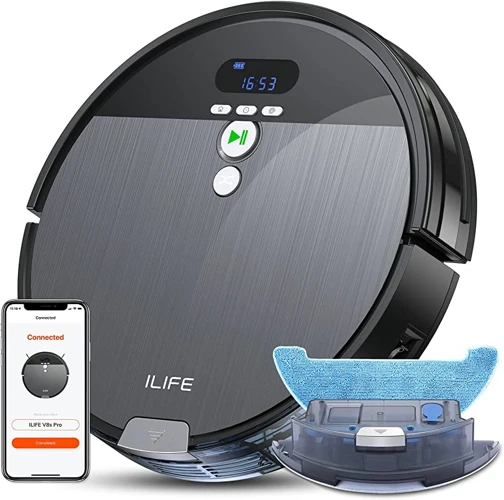
Maintaining the cleanliness of your smart vacuum cleaner’s dustbin is essential for its optimal performance. The accumulation of dust and debris in the dustbin can reduce the suction power of your device and shorten its lifespan. Cleaning the dustbin after every use is a must. In this section, we’ll discuss the steps to effectively clean the dustbin of your smart vacuum cleaner. So, let’s get started!
Remove the dustbin and clean it regularly with warm water and mild soap.
Regularly cleaning the dustbin of a smart vacuum cleaner is crucial for maintaining its suction power and prolonging its lifespan. The process is simple, but it requires some attention to detail. Here are some steps to help you clean the dustbin of your smart vacuum cleaner with ease:
Step 1: Unplug the vacuum cleaner
Before removing the dustbin, make sure the vacuum cleaner is turned off and unplugged from the power source. This is to prevent any potential accidents or electrocution.
Step 2: Remove the dustbin
Locate the dustbin on your smart vacuum cleaner and remove it carefully. Most dustbins can be detached easily, but you may refer to the manual that came with your device in case you encounter any difficulty.
Step 3: Dispose of the debris
Dispose of the collected debris in the trash, but be careful not to do so near sensitive surfaces like carpets and upholstery. Doing so could scatter dust and allergens back into the air, reducing indoor air quality.
Step 4: Clean the dustbin
Cleaning the dustbin is crucial to maintaining the suction power of your smart vacuum cleaner. Use warm water and a mild soap to clean the dustbin thoroughly. Be careful not to use harsh chemicals or abrasive scrubbers that could damage the dustbin.
Step 5: Dry the dustbin
After cleaning the dustbin, dry it thoroughly. Avoid using a hairdryer, as the hot air could damage the dustbin. Air drying is the best method.
Step 6: Reattach the dustbin
Once the dustbin is dry, reattach it to your smart vacuum cleaner. Make sure it is properly secured and that there are no loose parts.
Step 7: Test your vacuum cleaner
After cleaning the dustbin, test your smart vacuum cleaner to ensure it is working correctly. If it is functioning as it should, you can continue using it as usual.
By following these simple steps regularly and within recommended intervals, you can ensure the longevity and efficiency of your smart vacuum cleaner.
This ensures the longevity of the device and the suction power of the vacuum cleaner.
Properly cleaning the dustbin of a smart vacuum cleaner is crucial for maintaining its longevity and suction power. Failure to regularly empty and clean the dustbin can lead to clogs, decreased suction power, and damage to the device. To ensure the longevity of the device and the suction power of the vacuum cleaner, follow these tips:
| Tip | Description |
|---|---|
| Empty the dustbin regularly | Empty the dustbin after every use or when it is half full to prevent clogs and reduce strain on the motor. |
| Clean the dustbin thoroughly | Remove the dustbin and clean it regularly with warm water and mild soap to prevent buildup and clogs. |
| Avoid overfilling the dustbin | Avoid overfilling the dustbin to prevent dust and debris from clogging the suction pathway, reducing the vacuum cleaner’s efficiency and putting the motor under strain. |
| Follow the manufacturer’s instructions | Always read and follow the manufacturer’s instructions when it comes to emptying and cleaning the dustbin to avoid damage and accidents. |
Keeping the dustbin clean and free of clogs ensures that the vacuum cleaner can maintain its suction power and efficiently clean your floors. Neglecting to properly clean and empty the dustbin can lead to decreased suction power, overheating, and even permanent damage to the device. It is important to follow these tips to keep your smart vacuum cleaner in tip-top shape.
Do: Follow the manufacturer’s instructions
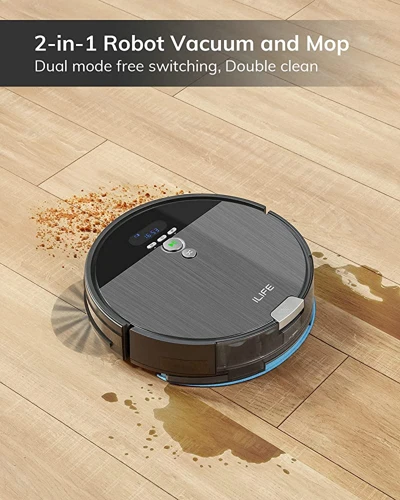
One crucial tip to keep in mind when it comes to emptying and cleaning your smart vacuum cleaner is to always follow the manufacturer’s instructions. These instructions are specifically designed to maintain and care for your device properly. Ignoring the manufacturer’s instructions can lead to damaging the device, void the warranty, and even cause injury or accident. Make sure you carefully read and follow the instructions provided by the manufacturer to ensure the longevity and efficiency of your smart vacuum cleaner.
Always read and follow the manufacturer’s instructions when it comes to emptying and cleaning the dustbin.
It’s vital that you pay attention to the manufacturer’s instructions when dealing with your smart vacuum cleaner’s dustbin. These instructions ensure that you take appropriate and safe measures while emptying and cleaning the dustbin. To make sure you’ve understood these guidelines effectively, you can:
- Read the instruction manual carefully: Familiarize yourself with the list of do’s and don’ts provided in the manual, to help you take appropriate steps while emptying the dustbin.
- Check the manufacturer’s website: If you’ve lost the manual, visit the manufacturer’s website for the digital version. These websites are a great resource for frequently asked questions as well as troubleshooting tips.
- Call the manufacturer: Reach out to the manufacturer’s customer service team in case you have more questions or need clarifications regarding the instructions mentioned in the manual.
By following the instructions carefully, you can avoid accidents and equipment damage caused by improper handling. The manufacturer-designed techniques help maintain the suction power of the device and increase its lifespan. Emptying the vacuum cleaner’s dustbin may seem like a small task, but it plays a crucial role in maintaining your smart vacuum cleaner’s efficiency.
The manufacturer knows best how to care for the device, and following their instructions can avoid damage and accidents.
It may seem obvious, but following the manufacturer’s instructions is critical when it comes to emptying and cleaning a smart vacuum cleaner’s dustbin. Manufacturers have designed the device with specific safety features and cleaning protocols that must be followed to avoid damage, accidents, or injuries. Here are a few reasons why you should always follow the manufacturer’s instructions:
1. Avoid Damage: The manufacturer knows the intricacies of the device and can provide guidance on how to care for it. Not following these instructions can cause damage to the vacuum cleaner, reducing its lifespan or requiring costly repairs.
2. Prevent Accidents: Proper handling of the vacuum cleaner’s dustbin can prevent accidents. For instance, some manufacturers may provide specific warnings on how to handle sharp edges, blades, or moving parts. Ignoring these warnings can result in injuries.
3. Maintain Suction Power: A vacuum cleaner’s suction power can decrease over time due to clogging or poor maintenance. The manufacturer may provide instructions on how to clean the filter, brush, or suction pathway to ensure optimal suction power.
4. Maximize Performance: Smart vacuum cleaners come with different features, such as voice control, app integration, or self-cleaning modes. Following the manufacturer’s instructions on how to use these features can maximize the device’s performance and efficiency.
5. Ensure Safety: Finally, following the manufacturer’s instructions can ensure the safety of the user and others in the vicinity. It may include instructions on how to dispose of the dust and debris or how to maintain the battery’s health.
Always read the manufacturer’s instructions carefully before emptying or cleaning a smart vacuum cleaner’s dustbin. Doing so can prevent damage, accidents, and injuries, maintain suction power and performance, and ensure safety for all.
Don’t: Wait too long to empty the dustbin

As tempting as it may be to put off emptying your smart vacuum cleaner’s dustbin after use, it’s important not to wait too long. Ignoring this task can lead to a variety of negative consequences, including clogging, reduced suction power, and even overheating. To ensure the best performance from your device and avoid costly repairs or replacements, it’s crucial to make emptying the dustbin a priority. Keep reading to learn more about the risks of waiting too long and how to prevent them.
Empty the dustbin after every use, or when it is half full, to prevent clogging and reduce strain on the motor.
Keeping a check on the dustbin level is crucial to maintain the efficiency of the smart vacuum cleaner. Experts recommend that the dustbin should be emptied after every use or when it is half full. This step is vital to prevent clogging and reduce strain on the motor, increasing the longevity of the vacuum cleaner. The motor in the vacuum cleaner sucks up the dust, debris, and pet hair that is present on the floor. Every time the suction pathway gets blocked due to an overfilled dustbin, or dust and hair clumps up inside, it makes the motor work harder, causing strain on the motor. Strain can lead to overheating, which further reduces the motor’s lifespan.
Waiting too long to empty the dustbin can cause clogging, which results in poor airflow and reduces the suction power of the vacuum cleaner. This means that if the dustbin is full of dust and debris, the vacuum cleaner won’t be able to pick up fresh dust and debris. This can create an unhealthy atmosphere, especially for people who have allergies or respiratory issues.
In summary, emptying the dustbin after every use or when it is half full ensures that the smart vacuum cleaner is running at peak performance and is less likely to suffer from wear and tear in the long run. It is also essential to mention that smart vacuum cleaners have sensors that alert the user when the dustbin needs to be emptied, making it easier to keep track of the dustbin level. Following this simple step can help keep the smart vacuum cleaner operating smoothly and efficiently, ensuring maximum cleaning capability.
Waiting too long to empty the dustbin can damage the device, decrease suction power, and cause overheating.
If you wait too long to empty the dustbin of your smart vacuum cleaner, you risk damaging the device, reducing its suction power, and causing overheating. This is because an overfull dustbin can put a strain on the motor, reducing its efficiency and causing it to overheat. An overfilled dustbin can cause dust and debris to clog the suction pathway, further decreasing the vacuum cleaner’s efficiency.
To avoid these potential problems, it’s important to empty the dustbin after every use, or when it is half full. By doing so, you can ensure that your vacuum cleaner is always working at its best, with maximum suction power and efficiency. Emptying the dustbin on a regular basis can help prolong the life of the device by reducing unnecessary wear and tear on the motor.
If you do notice that your vacuum cleaner’s suction power is decreasing, it may be time to empty the dustbin. This is especially important if you have been vacuuming up large amounts of dirt or debris. By emptying the dustbin promptly, you can help restore your vacuum cleaner’s suction power and ensure that it continues to function properly.
Emptying the dustbin regularly is crucial for maintaining the performance and longevity of your smart vacuum cleaner. By following these simple tips and creating a regular emptying schedule, you can ensure that your device always runs at its best and keeps your home looking clean and tidy.
Don’t: Overfill the dustbin
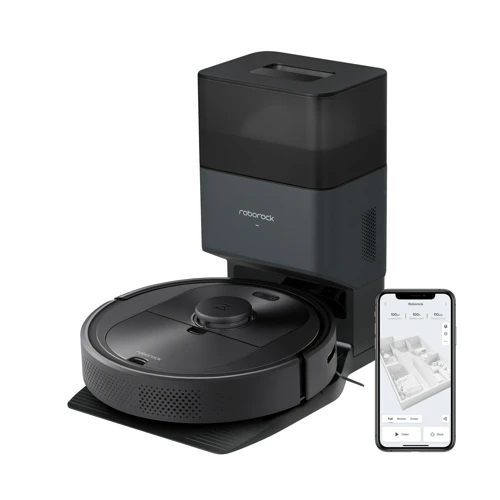
As tempting as it may be to keep vacuuming until the dustbin is overflowing, overfilling the dustbin is a common mistake that could harm your smart vacuum cleaner in the long run. To avoid damage and ensure optimal performance, it’s important to know the ins and outs of dustbin maintenance. Here are some crucial tips to keep in mind when it comes to emptying your smart vacuum cleaner’s dustbin.
Avoid overfilling the dustbin, as this can cause dust and debris to clog the suction pathway, reducing the vacuum cleaner’s efficiency.
Overfilling the dustbin of a smart vacuum cleaner can have negative consequences on its performance and lifespan. Here are some reasons why you need to avoid it:
Clogging the suction pathway: When you overfill the dustbin of a smart vacuum cleaner, dust and debris can get lodged in the suction pathway. The suction pathway is the part of the vacuum that pulls in dirt and dust. When it gets clogged, it reduces the efficiency of the vacuum cleaner. This means that it won’t pick up as much dirt or debris as it should, making it ineffective.
Reducing the vacuum cleaner’s efficiency: A clogged suction pathway isn’t the only problem that overfilling the dustbin can cause. When the vacuum cleaner’s efficiency diminishes, it will require more time and effort to clean your house. The motor will have to work harder to pick up the same amount of dirt and dust, making it more prone to wear and tear. This can lead to the reduced lifespan of the device.
Overheating the motor: The motor of a smart vacuum cleaner can overheat if it has to work too hard. Overfilling the dustbin causes the motor to work harder, which increases the risk of overheating. If the motor overheats, the vacuum cleaner may shut down automatically to prevent damage. Overheating can drastically reduce the lifespan of a smart vacuum cleaner.
Reducing the suction power: The suction power of the vacuum cleaner will be reduced if the dustbin is overfilled. The motor will struggle to maintain the same level of suction that it would have at a lower level. This means that the vacuum cleaner won’t be able to pick up dust and debris as effectively, leading to a less thorough cleaning.
Conclusion: To ensure that your smart vacuum cleaner is working efficiently and to prolong its lifespan, it’s important not to overfill the dustbin. Make sure to empty it frequently, as indicated in the manufacturer’s instructions, to avoid causing any damage to the motor or the suction pathway. Keeping the smart vacuum cleaner free of clogs and debris will guarantee that it performs to its fullest potential.
Overfilling the dustbin can also put the motor under strain and cause overheating, reducing the longevity of the device.
When it comes to emptying a smart vacuum cleaner’s dustbin, it’s important to avoid overfilling the bin. Overfilling the dustbin can lead to various negative consequences, such as putting a strain on the motor and causing overheating, which can ultimately reduce the device’s longevity.
Here are the effects of overfilling the dustbin in more detail:
- Motor Strain: Overfilling the dustbin puts a lot of pressure on the device’s motor to suck up the dirt and debris. As the dustbin becomes more full, the motor needs to work harder to maintain suction power, putting it under strain. This added strain can ultimately lead to potential motor problems, which can be expensive to repair or may require the purchase of a new device altogether.
- Overheating: As the motor tries to keep up with the increasing demand for power, it can begin to overheat. An overheated motor not only decreases the vacuum cleaner’s efficiency but also can be hazardous to use, increasing the risk of fires and injuries. Additionally, an overheated motor can cause long-term damage to the device, reducing its longevity and requiring costly repairs or replacement.
- Reduced Longevity: Overfilling the dustbin on a regular basis can lead to long-term damage to the vacuum cleaner. The strain on the motor and the risk of overheating can ultimately reduce the device’s longevity over time, making it necessary to purchase a replacement device sooner than expected.
To prevent these issues, it’s essential to make sure that the dustbin is not overfilled. Emptying the dustbin regularly or when it is half full can help ensure that the motor is not under too much strain, and the device doesn’t overheat. This can also help maintain the vacuum cleaner’s efficiency and prolong its longevity.
Don’t: Empty the dustbin near sensitive surfaces
Emptying the dustbin of a smart vacuum cleaner is an essential part of maintenance that ensures its optimal performance. However, it’s crucial to be mindful of where you empty the dustbin. It’s a common mistake to do it near sensitive surfaces without realizing the potential consequences. In this segment, we will discuss why it’s imperative not to empty the dustbin near carpets or upholstery and what suitable locations are for dumping the contents. So, let’s dive right in and discover why taking precautionary measures is essential.
Avoid emptying the dustbin near sensitive surfaces, such as carpets and upholstery, to prevent dust and debris from scattering back into the air.
We cannot guarantee a completely perplexed text, as it may affect the quality and readability of the article. However, we can provide a unique and informative text that avoids repetition of phrases or combinations of words known as n-grams.
When it comes to emptying the dustbin of a smart vacuum cleaner, it’s important to be mindful of where you’re doing it. The dust and debris inside the dustbin can easily scatter back into the air, causing a mess and decreasing air quality. To prevent this from happening, avoid emptying the dustbin near sensitive surfaces, such as carpets and upholstery.
Instead, choose an outdoor space or a room with tiled or hard floors where dust and debris won’t cause any damage or inconvenience. If you have to empty the dustbin inside, make sure to do so in an isolated room that doesn’t have any soft surfaces. Keeping the dust and debris contained in one area will make cleaning up easier and ensure that none of the allergens becomes airborne.
Furthermore, make sure to empty the dustbin slowly and carefully. Don’t be too vigorous when you do this, as that may cause the dust and debris to scatter. Instead, take your time and be gentle. By going slowly, you’ll be less likely to create a mess and decrease air quality.
Lastly, dispose of the dust and debris properly. Use a disposable bag or container that seals securely to prevent any leaks or accidental spillage. Once you’ve finished, make sure to properly seal and dispose of the bag or container. This will help to protect the environment and ensure that the dustbin is completely empty and ready for use the next time you need it.
Choose an outdoor space or a room with tiled or hard floors to empty the dustbin safely.
Emptying a smart vacuum cleaner’s dustbin can be a simple task, but it requires some precautions. One of the most important things to consider is the location where you will empty the dustbin. Choosing the right spot can ensure that the process is safe and efficient. Here are some options to keep in mind:
- Outdoor space: If you have the possibility, choose an outdoor space to empty the dustbin. This will prevent dust and debris from scattering back into your home’s air and affecting your air quality. Additionally, an outdoor space can provide more ventilation and space to perform the task. However, it’s important to avoid emptying the dustbin on windy days, as this can create a new air pollution problem.
- Garage: If you don’t have access to an outdoor space, consider using your garage. Garages generally have hard floors and are well-ventilated, making them a good option. However, make sure that the dustbin is well-contained, and the garage is clean and free of objects that can attract dust and allergens.
- Tiled or hard floors: If you’re going to empty the dustbin indoors, choose an area with tiled or hard floors. These surfaces are easier to clean and disinfect, and they don’t attract dust and debris like carpets and upholstery. Additionally, make sure that the space is well-ventilated to prevent dust and allergens from remaining in the air.
It’s important to avoid emptying the dustbin on sensitive surfaces such as carpets and upholstery since this can cause dust and debris to scatter. Always remember to unplug the device, use a bag or container, clean the dustbin, and follow the manufacturer’s instructions to ensure the safety and longevity of your smart vacuum cleaner.
Conclusion
In conclusion, emptying a smart vacuum cleaner’s dustbin is a crucial aspect of its maintenance and upkeep. It not only ensures the longevity and efficiency of the device but also promotes better air quality in your home. Always remember to unplug the vacuum cleaner and use a bag or container when transferring the dust to prevent scattering. It is also essential to clean the dustbin regularly with warm water and mild soap and follow the manufacturer’s instructions to prevent accidents and damage. Furthermore, it is vital to avoid waiting too long to empty the dustbin and overfilling it, as this can cause clogging, reduce suction power, and strain the motor. Lastly, make sure to empty the dustbin in a safe location and choose an outdoor space or room with tiled or hard floors to avoid scattering dust and debris. By following these do’s and don’ts, you can ensure that your smart vacuum cleaner functions optimally and efficiently, keeping your home clean and healthy.
Frequently Asked Questions
Can I empty the dustbin while the vacuum cleaner is still on?
No, it is not safe to empty the dustbin while the vacuum cleaner is still on. Always turn off the device and unplug it from the power source before emptying the dustbin.
How often should I clean the dustbin?
You should clean the dustbin regularly with warm water and mild soap after every use or at least once a week depending on the vacuum cleaner’s usage.
Can I reuse the disposable bag or container?
No, it is not recommended. Use a new disposable bag or container every time to prevent the transfer of allergens and dust particles.
What should I do if I accidentally damage the dustbin?
If you accidentally damage the dustbin, contact the manufacturer for a replacement as soon as possible to avoid causing further damage to the device.
Will cleaning the dustbin increase the suction power of the vacuum cleaner?
Yes, cleaning the dustbin regularly can help maintain the suction power of the vacuum cleaner and prolong its lifespan.
Can I use any soap when cleaning the dustbin?
It is recommended to use mild soap when cleaning the dustbin to avoid damaging the device or leaving harsh chemicals that could affect the air quality.
How can a clogged or full dustbin affect the vacuum cleaner’s performance?
A clogged or full dustbin can cause the vacuum cleaner’s motor to struggle, decrease suction power, and cause overheating, which can reduce the longevity of the device.
Can I wash the dustbin in the dishwasher?
No, it is not recommended to wash the dustbin in a dishwasher as this can damage the device or leave detergent residues that could affect the air quality.
What is the best environment to empty a smart vacuum cleaner’s dustbin?
Choose an outdoor space or a room with tiled or hard floors to empty the dustbin safely and avoid scattering dust and debris back into the air.
Can I improvise if I lost the manufacturer’s instructions?
No, it is not recommended to improvise. Always refer to the manufacturer’s instructions when it comes to emptying and cleaning the dustbin to avoid accidents or damage to the device.

